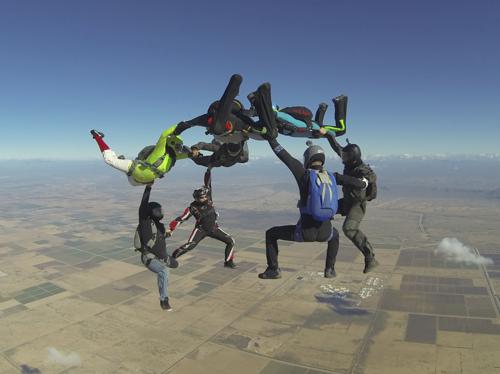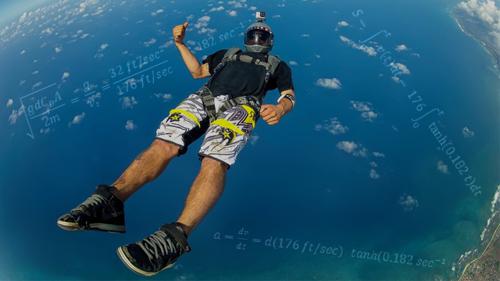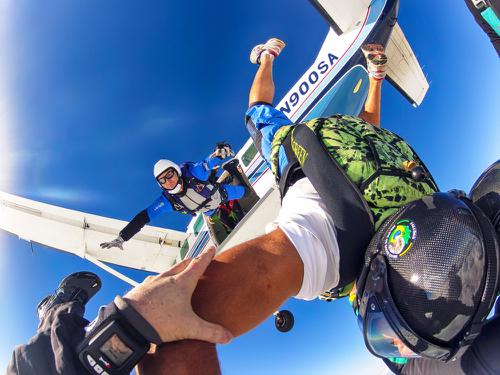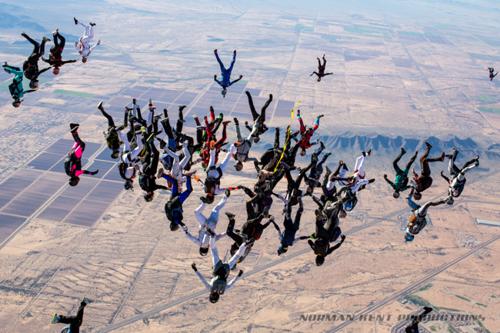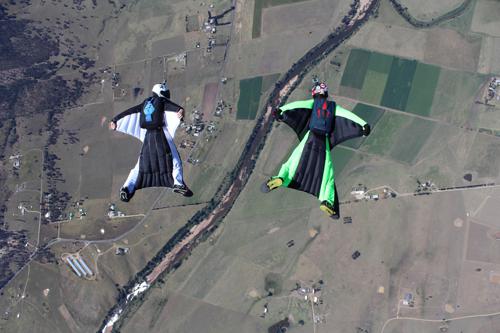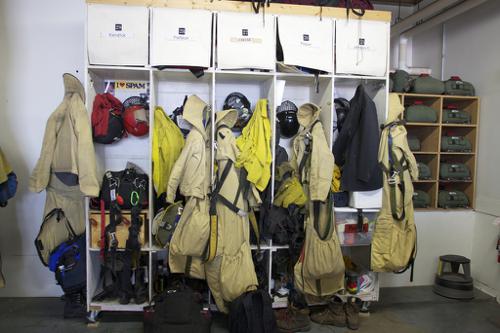An Adventure in Mexico - Puerto Escondido Boogie
After a grueling 38 hours in the car to Puerto Escondido Mexico, via Central Texas, (mostly brought on by a bad sense of direction and a belief that I could plan a better route than Google, the real drive should have only been around 21 hrs.) We arrived in the quaint coastal town of Puerto Escondido, OAX, for the new years boogie put on by Skydive Cuautla.
Puerto Escondido is a small ocean town on the pacific coast, known for its beautiful beaches and friendly people. Puerto Escondido means “hidden port” because it has remained relatively untouched by commercialization that so often takes over tourist destinations. While not as well known as its neighbor, Acapulco, Puerto Escondido has been a longtime favorite vacation destination for the locals, allowing this town to hold on to a truly genuine feeling.
As we descended from the mountains south of Oxaca, our first sight of the small Mexican town was of a picturesque beach, bright sun, gentle sea breeze, and blue sky, punctuated with the bright colors of the canopies soaring through the crisp ocean air. We quickly followed them to the landing area, a white sanded beach with deep blue water dotted with small umbrellas and sun bathers, and inquired as to where to find manifest. Everyone was more than happy to point us in the right direction, maybe a half a block up the street we found their buses out front of a beautiful traditional style Mexican patio, surrounded by a wrought iron gate, draped with banners urging us to come, "jump in paradise". Just a few steps inside this oasis-esque courtyard stood a thatch roofed cabana, with a set up of tables and computers.
We quickly made our way over there, and after an attempt to comprehend my limited knowledge of Spanish vocabulary in regards to skydiving, an English speaking staff member found us and pulled us aside to help out. We had our gear checked, a safety briefing, and then told us how to purchase jump tickets, and informed of the white party that was set to occur that evening. We told them we would probably not jump that day, as we needed to find a hotel, shower (most importantly) eat and then come and jump. The organizer then immediately got on her phone and helped to find us a room at a local hotel. EVERYTHING was booked up, and she spent close to an hour of her time calling the hotels around us, until finally she was able to send us in the right direction. We ended up getting a room at the Caracol Plaza, which was the best hotel I have ever stayed at in my life, but that is a review for Hotels.com (but if you want to be treated like royalty, for the price of a pauper, definitely look them up).
We washed up, grabbed some food, and headed back to manifest. We decided to do a warm up little two way jump, though we received a warm welcome and invitation to jump from everyone there, we made our way to the bus, and headed off to the airport. The loading went smooth, and their shuttles were clean and comfortable. Which made for an enjoyable ride to the airport.
The Airport was located just 5 minutes up the road on the mountain top overlooking the city, where we were unloaded, geared up, walked out onto the flight line, loaded into the otter, and then airborne lickety split! The climb to altitude was as quick as it was beautiful, and we even got up to 14k AGL on this jump. The Otter was in tip top condition, clean and maintained better than most planes I have seen in the states. The other jumpers on the plane were helpful in describing the landing pattern again, and helped to make sure we had a good spot.
We had a Great Jump, nice soft landings on the HUGE beach landing area, and headed back up to the manifest area to pack. The packing area was a large shaded area right across from the manifest hut, with tarped over floors, and a large grassy area behind the manifest hut. We had ample room to pack, and they even had some packers on hand to help with any overflow.
As sunset load came down we headed over to the beach to watch everyone come down, where we were greeted with beers, and everybody took pictures and celebrated a good day of jumping while a Fire orange sun sank low into the into the sea, casting a warm glow upon the smiling faces of the jumpers.
We retired to our hotel to prepare for the New Years Eve white party. I was skeptical at first to spend 700 pesos a person on a party (roughly $60 USD), but after we arrived at the party every ounce of doubt was removed from my mind. They had paper lanterns and sparklers for us to light off on the beach, the paper lanterns floating skyward like fireflies into the cool night air, while we drank sangria, and took group photos, before walking up to a restaurant courtyard area. There we sat at long tables, surrounded by friendly people, a DJ spinning music, skydiving videos playing on a projector screen, and the smell of food grilling floating through the air.
The Beer was cold, the conversations warm, and many new friends were made that night, (shout out to all of the Canadians that came out to escape the winter weather!). Some speeches were given, translated into both Spanish and English, and then food was served; And let me tell you, we ate only local food the entire time in Mexico, and the food they served was the second best we have had in all of Mexico! They passed out party favors, hats, tiaras and horns for everyone, as well as champagne and grapes, which might not have been the best idea, because it was a large group of skydivers, and we just can’t have nice things, so it took less than a minute for grapes to begin whizzing through the air followed shortly by tortillas and paper plates!
At the stroke of midnight a firework show kicked off, and the party jumped into high gear! It was a beautiful moment as the moon shone brightly overhead, fireworks cracked in the sky, music floated through the air, and everyone was happy and together, not separated by culture, country or language, but united as Skydivers doing what we love. We enjoyed the festivities, hailed a cab, and retired to the hotel for a night of finally sleeping on a real bed, and not curled up in the seat of a car.
Our second and final day there, Manifest did not begin operating until around noon, so we had the morning to experience the town, visit the small tiendas, enjoy the food from roadside vendors, and visit the beach. There was much more to do in this little town, and beauty was everywhere you looked, from the fantastic landscapes, architecture of the buildings, to the street art plastered on the alleyways and building around town.
We were invited on more jumps, and had more wonderful experiences with the staff and fun jumpers at the boogie. We ate in the cafe on the manifest grounds, our home DZ still has the best kitchen in the world, but the food and service here was a close second. We had awesome jumps that day, and even got to see the awesome staff in action when I landed off on a tracking dive (surprising right?), and saw a cutaway on our jump. Someone was in a boat and grabbed the main and free bag right as they hit the water, and a bus and people on ATV's were there to check on us and give us a ride back to the manifest area before I could even stow my brakes. We made it back, packed, and then set out for a night on the town before we left for home in the morning.
EVERYTHING about this boogie ran like a well-oiled machine, the staff of Skydive Cuautla and their volunteers did a phenomenal job of organizing this boogie. The people, all over Mexico, not just at the boogie, were friendly, the facilities were top notch, both the Super Otter and the Sky Van were in incredible condition, loads went up fast, and the altitude was always generous. We have definitely found a new years tradition, and will sing the praises of this boogie to all of our friends. I will be there again this coming new year with bells on! This is one boogie you MUST attend at least once in your lifetime, as you are surely missing a big chunk of your skydiving life if you do not!



